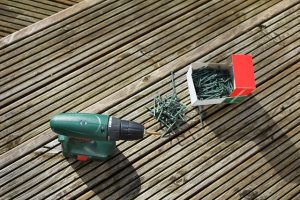
Some types of screws are easier to use than others. Self-drilling screws, for instance, eliminate the need for a pilot hole. You can use them to join wood, metal and even plastic. As you drive a self-drilling screw into an object, it will tap its own threads. But don’t let that fool you into thinking that self-drilling screws are the same as self-tapping screws.
Overview of Self-Drilling Screws
Self-drilling screws are fasteners that drill their own hole when driven into an object. Like all screws, they feature a head, shank and a tip. Some self-drilling screws feature a hexagonal or “hex” head, whereas others feature a Phillips head. Using a screwdriver with the appropriate bit, you can drive a self-drilling screw into an object — all without creating a pilot hole.
How Self-Drilling Screws Work
Most screws require the use of a pilot hole. Pilot holes, of course, are predrilled holes. Before driving a traditional screw into an object, you’ll typically need to create a pilot hole with a drill bit. Alternatively, you can use a self-drilling screw.
Self-drilling screws are able to tap their own threads while simultaneously eliminating the need for a pilot hole. They are available in different styles. Some self-drilling screws are longer than others, and some of them have a different type of head than others. A shared characteristic among all self-drilling screws, though, is a drill-like tip.
The tip is designed to mimic the function of a drill. It’s curved in the same way as a drill bit, which allows self-drilling screws to drill into objects. Self-drilling screws will dig out material and create or tap their own threads.
Differences Between Self-Drilling and Self-Tapping Screws
While they both tap their own threads, self-drilling and self-tapping screws aren’t the same. Only self-drilling screws feature a drill-like tip. Self-tapping screws typically feature a plain, pointed tip.
Self-tapping screws also require the use of a pilot hole. They can tap their own threads, but you’ll still need to create a pilot hole before driving a self-tapping screw into an object. You can create a pilot hole that’s slightly smaller than the diameter of the screw itself, after which you can drive the self-tapping screw into it.
Another difference between self-drilling and self-tapping screws is that the former supports thicker, harder materials. Self-drilling screws are typically more versatile in this regard. The main difference, however, is that self-drilling screws drill their own hole when driven objects, whereas self-tapping screws do not.
